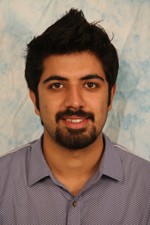
PhD Thesis Proposal
May

Carnegie Mellon University
10:30 am to 11:30 am
Abstract:
In manufacturing and warehouse scenarios, robots often perform recurring manipulation tasks in structured environments. Fast and reliable motion planning is one of the key elements that ensure efficient operations in such environments. A very common example scenario is of manipulators working at conveyor belts, where they have limited time to pick moving objects and if the planner exceeds a certain time threshold, they would fail to pick the objects up. Similar scenarios are encountered in automated assembly lines. Such time-critical applications spur the need for planners which are guaranteed to be fast. To this end we introduce and formalize the concept of Constant-time Motion Planning (CTMP); namely, the ability to provably guarantee to generate a motion plan within a (small) constant time. We then develop several algorithms that fall into the class of CTMP algorithms.
Specifically, up to now we have developed constant-time motion planning algorithms for two domains; (1) Manipulation for repetitive tasks in static environments (2) Manipulation for the task of picking up moving objects (of known models) off a conveyor belt. For the latter, the robot typically perceives a rough pose estimate viewing from a distance, but it must start moving early on (relying on that rough estimate) to be able to reach the object in time and then adjust its motion in real time as it gets improved estimates. Our key insight is that since these domains are fairly repetitive, the space in which the robot operates is a very small subset of its configuration space, which allows us to preprocess it exhaustively. The preprocessing step generates a representative set of paths that can be used by search at query time in a way that assures small constant-time planning. For the former domain, we evaluate our algorithm for a mail sorting task in simulation on PR2 and also test the algorithm on a real truck-unloading robot. For the latter domain, we perform real robot experiments on PR2 working at a conveyor belt.
For the remainder of this thesis we propose the following work. First, we propose to further study and formalize what CTMP implies in practice and what underlying assumptions it entails. Second, we propose to extend our planning framework to semi-static environments (i.e. containing some movable obstacles). Third, we aim to boost the capability of the conveyor pick-up task by having multiple robot arms simultaneously picking up objects, while still maintaining constant-time planning guarantees.
Thesis Committee Members:
Maxim Likhachev, Chair
Christopher Atkeson
Oliver Kroemer
Siddhartha Srinivasa, University of Washington
Oren Salzman, Technion